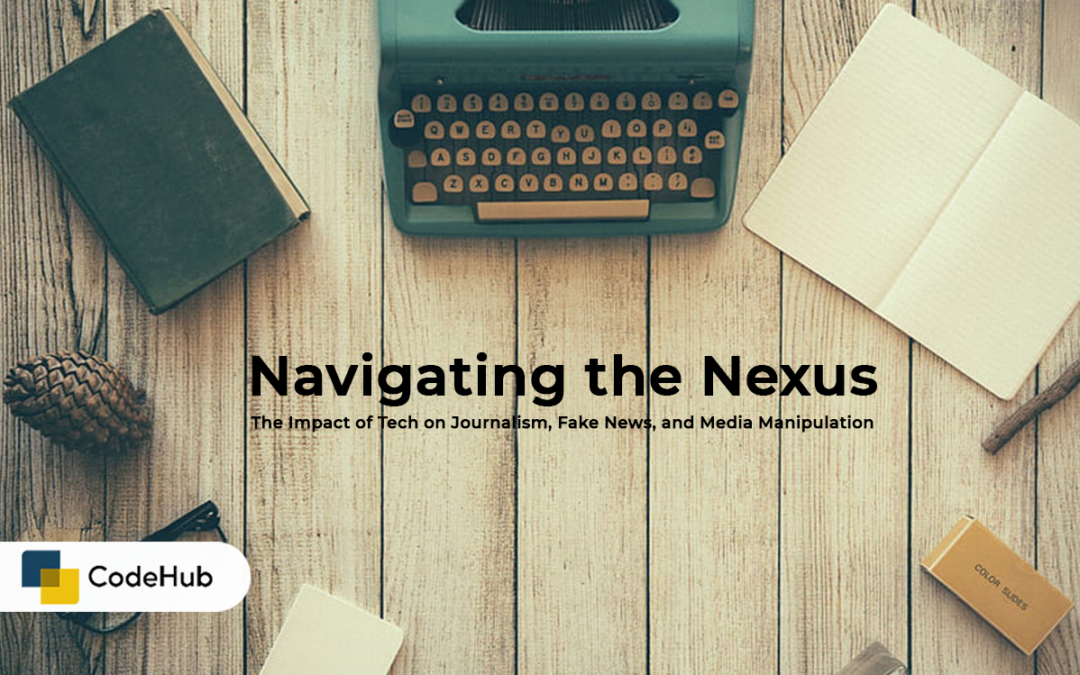In an era dominated by rapid technological advancements and digital interconnectedness, the landscape of journalism has undergone a seismic shift. While technology has facilitated unprecedented access to information and empowered citizen journalists, it has also ushered in new challenges, including the proliferation of fake news and media manipulation. In this blog, we’ll explore the intricate interplay between technology and journalism, examining both the opportunities and pitfalls it presents.
The Rise of Digital Journalism
The advent of the internet and social media platforms has democratized the dissemination of news, enabling anyone with an internet connection to become a content creator and publisher. This democratization has empowered grassroots movements, amplified marginalized voices, and fostered greater transparency and accountability in reporting.
At the same time, traditional news outlets have had to adapt to the digital age, embracing multimedia storytelling, interactive graphics, and data journalism to engage audiences in an increasingly competitive media landscape. The immediacy and accessibility of online platforms have revolutionized how news is consumed, with consumers now able to access breaking news and updates in real-time from anywhere in the world.
The Challenge of Fake News and Misinformation
However, the democratization of news has also given rise to a phenomenon known as fake news – false or misleading information masquerading as legitimate news. Social media algorithms, echo chambers, and filter bubbles have contributed to the viral spread of misinformation, often leading to widespread confusion, polarization, and distrust in the media.
Moreover, malicious actors, including state-sponsored disinformation campaigns and partisan propagandists, have weaponized social media platforms to sow discord, manipulate public opinion, and undermine democratic processes. The proliferation of deepfakes, AI-generated videos that convincingly depict individuals saying or doing things they never actually did, further exacerbates the challenge of distinguishing fact from fiction in the digital age.
The Role of Technology in Combatting Misinformation
Despite the challenges posed by fake news and media manipulation, technology also offers potential solutions. From fact-checking algorithms and automated content moderation tools to digital verification techniques and media literacy programs, there are a variety of technological interventions aimed at combating misinformation and promoting media literacy.
Platforms like Facebook, Twitter, and YouTube have implemented policies and algorithms to curb the spread of false information and improve content integrity. Independent fact-checking organizations and collaborative initiatives, such as the International Fact-Checking Network (IFCN) and First Draft, work tirelessly to verify the accuracy of online content and debunk falsehoods.
The Importance of Media Literacy and Critical Thinking
Ultimately, combating misinformation requires a multi-faceted approach that goes beyond technological solutions. Media literacy, critical thinking skills, and a healthy dose of skepticism are essential tools for navigating the digital information landscape. Educating individuals, particularly young people, about how to evaluate sources, discern credible information from misinformation, and recognize bias is crucial in fostering a more informed and resilient society.
Furthermore, promoting diversity and inclusivity in newsrooms and amplifying underrepresented voices can help mitigate the spread of misinformation by providing audiences with a more comprehensive and nuanced understanding of complex issues.
Conclusion: Forging a Path Forward
In conclusion, the impact of technology on journalism is profound and far-reaching, shaping the way news is produced, consumed, and interpreted. While technology has democratized access to information and empowered individuals to participate in public discourse, it has also created new challenges, including the proliferation of fake news and media manipulation.
Addressing these challenges requires a collaborative effort involving journalists, technologists, policymakers, educators, and civil society organizations. By leveraging technology to combat misinformation, promoting media literacy and critical thinking skills, and fostering a culture of transparency and accountability in journalism, we can forge a path forward towards a more informed, engaged, and resilient society.
In navigating the nexus between technology and journalism, let us remain vigilant, discerning, and committed to upholding the integrity of the fourth estate as a cornerstone of democracy. Only by working together can we confront the challenges of the digital age and ensure that the pursuit of truth and accuracy remains paramount in an ever-evolving media landscape.

